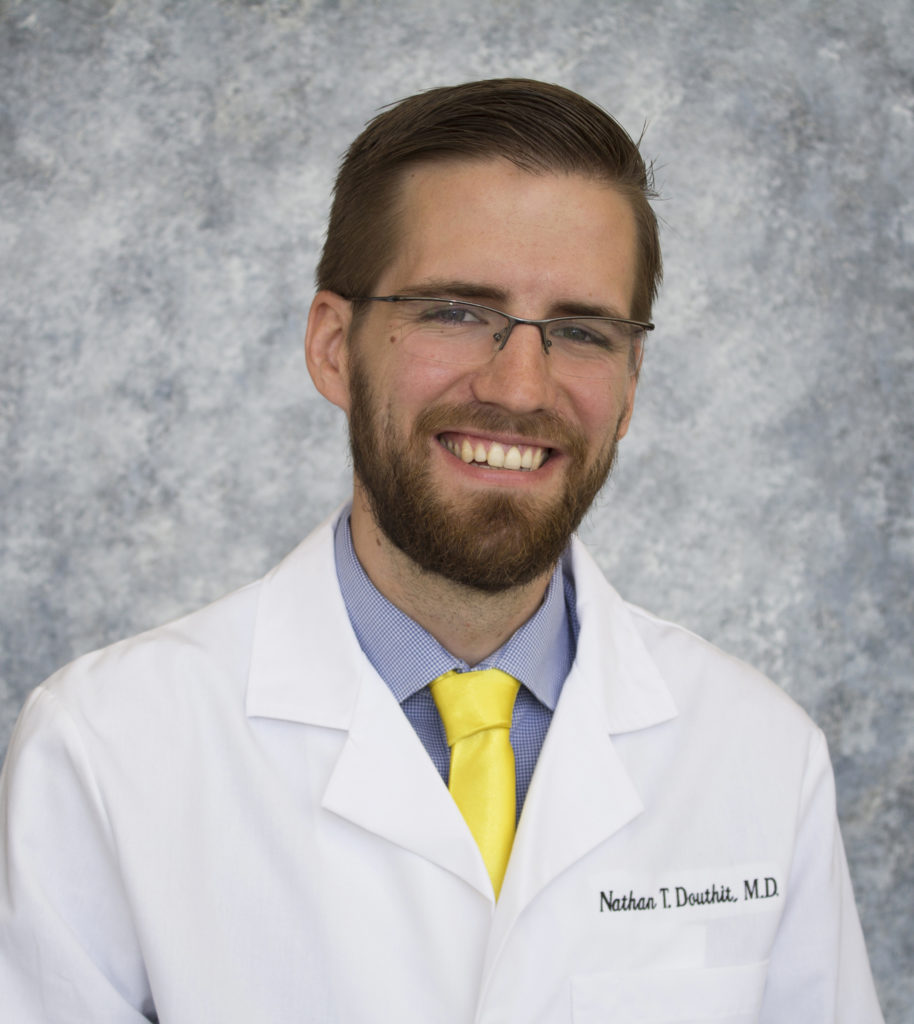Takeaway
Making an accurate diagnosis and giving a name to our patient's illness is a crucial component of acceptance and healing for the patient and their family.

Lifelong Learning in Clinical Excellence | February 26, 2019 | 4 min read
By Nathan Douthit, MD, Brookwood Baptist Health, Birmingham, Alabama
And it was. I had just received the results. My patient had a rare neurodegenerative disease. She had originally been admitted for seizures. The brief episodes of staring into space without responding were new; the weakness, incontinence, dysphonia and dysautonomia had been plaguing her for several years prior to admission. She had been worked up by multiple doctors—general practitioners, specialists, allopathic, and naturopathic physicians—who attributed her symptoms to a prior traumatic brain injury, alternative medicines, or psychiatric illness. Her abnormal brain MRI had prompted our team to evaluate further. We had to order the genetic test twice— the hospital initially declined to pay for it as an inpatient – she was now seeing me regularly in clinic. After multiple phone calls, extensive documentation, discussion with multiple attending physicians, and an arduous financial approval process, the test was collected six months after she had been discharged from the hospital.
“That’s a great diagnosis.”
And it was. This one-in-a-million disease had never been heard of by anyone on our team, including me, prior to meeting this patient. After finally managing to get the test approved, I was excited to see our clinical suspicion justified. As I shared the triumph, my colleagues were genuinely pleased for me. Doctors were fascinated and wanted to hear more.
I realized, however, that there was one group of people who would not be as delighted to discuss this with me; certainly they would not describe the news as “great.” I would have to speak with my 25-year-old patient. I would need to explain to her and her parents that the condition was incurable. Her sickness would continue. It would be progressive. I would have to answer questions as to how and when she would die.
They had known before we ordered the test that, if positive, there was no cure. They knew this terrible disease was a possible answer. They knew that the test, if negative, would send us straight back to square one to evaluate a possible etiology for her strange symptoms. The patient and her family wanted the answer. Still, there was a nagging sense of guilt as our appointment approached.
I had suggested the test, had I hoped it would be positive? I was, in a way, pleased with the results. I even claimed, “That’s a great diagnosis.”
This is a common dilemma for many doctors. We seek answers and conclusions. We want to know what it is that is afflicting our patients. We are willing to charge ahead with tests and procedures to find answers. There is a satisfaction in making great diagnoses.
At the same time, that satisfaction can be met with deep sadness when there is no cure for our patients. There is inherent grief in working with humans burdened with disease. We must remember that we are partners with our patients, our work does not end with diagnosis, and they too look forward to a “great diagnosis”—even if the prognosis is poor.
I approached our follow-up appointment as a partner to my patient and her family. They were gracious as I shared her result with them. I answered her questions and accepted an invitation to pray with and for them. We discussed what we could do to relieve the symptoms of her disease – a rare, inherited neurodegenerative leukodystrophy. We discussed referral to a university-based genetic specialist. We discussed the current options and the next steps – all while knowing there was no cure to be offered.
At the end of the visit, the parents thanked me for taking care of their daughter. They were not excited about the future, but they seemed relieved to have some answers. They had felt antagonized by the medical system in the past and were terrorized by a mysterious unnamed malady. As they left, they seemed at peace.
It has now been six months since the results arrived at my clinic. My duty to this patient has not stopped with her diagnosis. I am still involved in this patient’s care—more so than many, if not all, of my other patients. I call her frequently and often handle the sequelae of her disease by phone. When it is necessary to admit her to the hospital I go see her.
Our physician-patient relationship has deepened as the disease has progressed. As I considered the emotions I had regarding her diagnosis and the profound impact the disease has had on her and her family I realized: to this patient and her family, we had made a great diagnosis. Their definition of that phrase, however, was different than ours. They were not impressed by our clinical acumen nor the rarity of her pathology. They only wanted an answer so they could stop searching. With a named diagnosis, they could focus on her comfort.
Patients need us to excel in diagnostic reasoning. One of internal medicine’s greatest contributions to care is providing accurate and timely diagnoses. The sick need us to train and fight to make these “great diagnoses.” But we must remember their priorities. To them, diagnosis is a means to an end. The end is the relief of their pain – be it physical, mental, or spiritual. While there are times when the former is the hardest to treat, we can almost always do something to aid mental and spiritual well-being. Discovering the disease can help relieve suffering. Giving a name to their illnesses is a crucial component of acceptance and healing of the entire patient.
That’s a great diagnosis.

